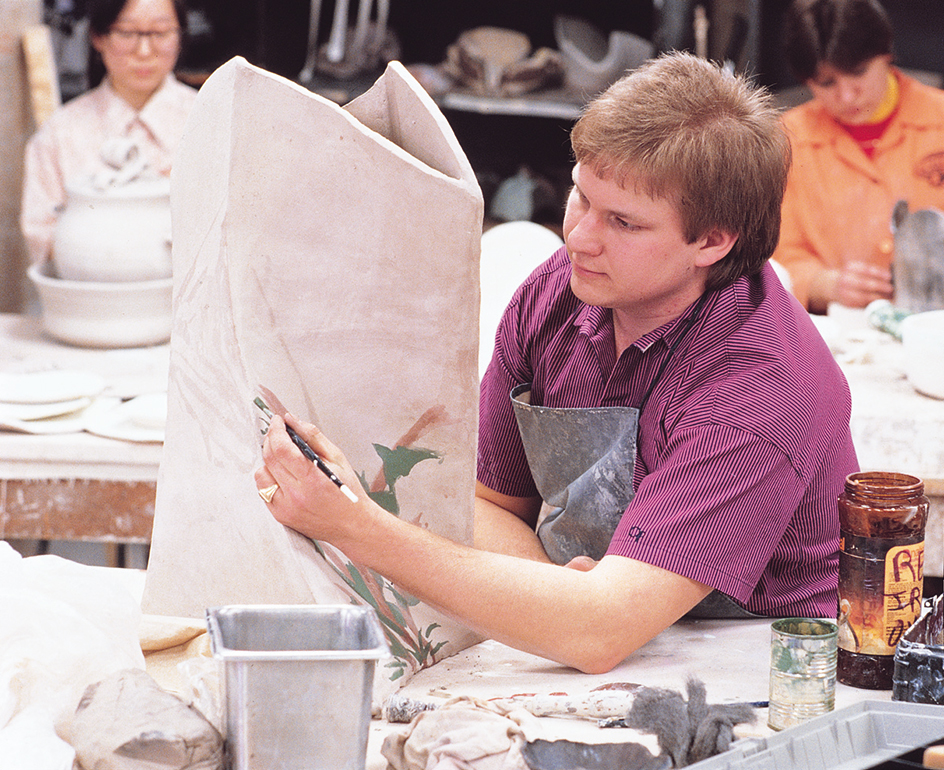Clay is a substance present in most kinds of soil. Geologists define clay as extremely small particles of rock that measure less than 4 microns, or about 1/10,000 of an inch, in diameter. The word clay also refers to a sticky kind of earth that can be easily shaped when wet and hardens when dried or baked.
Clay minerals consist mainly of tiny, sheetlike structures of alumina and silica bound together by other elements. Various other materials in clay may give it different colors. For example, iron oxide may color clay red. Clays that contain various amounts of carbon compounds may be different shades of gray.
The clay in soil has a vital role in farming. For example, it retains ammonia, phosphorus, potassium, and other nutrients used by plants. Clay also helps soil retain the moisture necessary for plant growth. Without clay, soil would not keep its fertility from year to year and would dry out quickly. However, too much clay makes soil stiff and heavy and prevents the movement of air and water through soil.
There are two general types of clay, based on how the substance reacts when mixed with water. Expandable clay swells when water is added to it. Expandable clay can absorb so much water that the clay itself becomes a liquid. Nonexpandable clay becomes soft but not liquid when mixed with water.
The petroleum industry uses expandable clays called bentonites to make drilling mud, a fluid used to lubricate the drill bit. Bentonites are produced by the weathering of volcanic rock. The petroleum industry uses another kind of expandable clay as a chemical agent in the process of oil refining.
Ceramics industries use nonexpandable clay in making bricks, pottery, tile, and many other products. For example, pottery makers mold moist clay into almost any shape and bake it in hot ovens called kilns. Heat removes the water from the clay, which becomes permanently hard and cannot be softened by adding water to it. The whitest kind of clay, kaolin or china clay, is used in making porcelain. The paper industry also uses kaolin, as a filler that adds whiteness and strength to paper. In addition, kaolin gives some kinds of paper a smooth, shiny surface. Fire clay contains a large percentage of silica and can withstand high temperatures. It is used in making firebrick and furnace linings.

